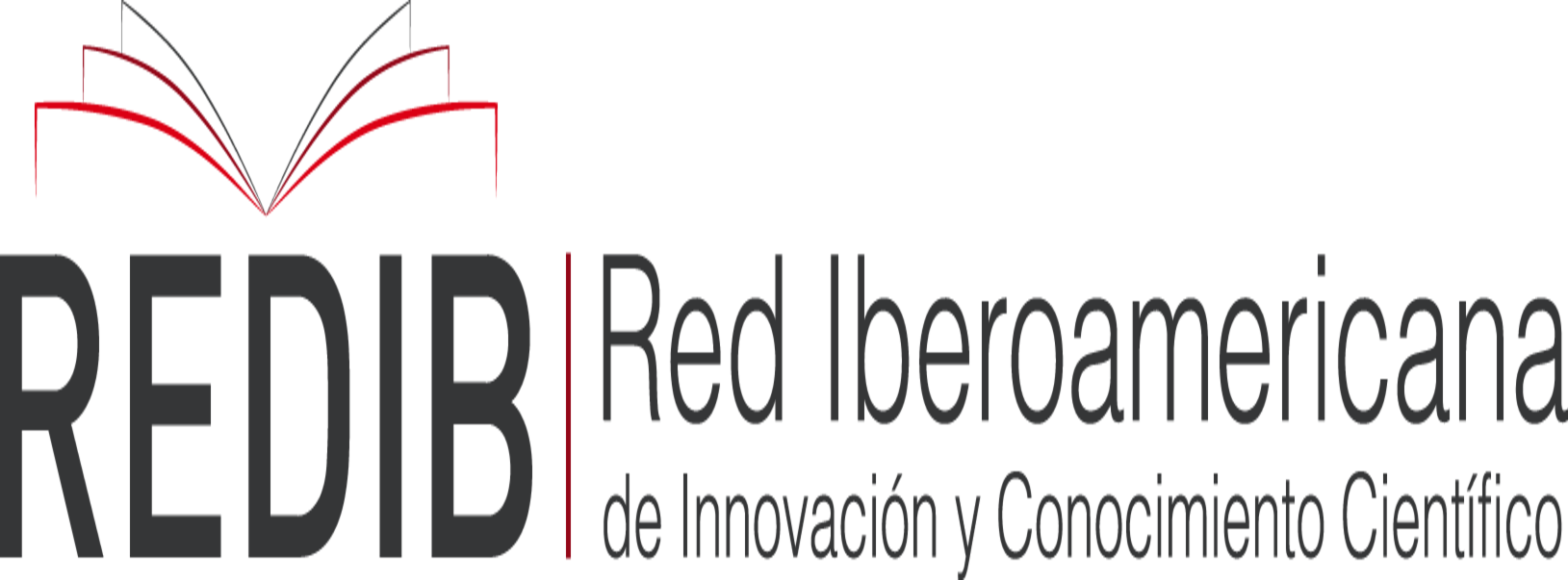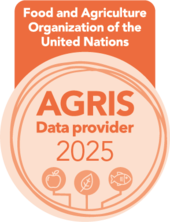Caza y comercio de carne de origen silvestre: Estudio de caso en tres comunidades nativas amazónicas de Ucayali, Perú
DOI:
https://doi.org/10.57188/manglar.2024.007Abstract
Poco se sabe cómo operan los mercados de carne de monte en la Amazonía peruana y la influencia que tienen sobre los niveles de extracción con fines alimenticios y comerciales. La investigación analiza cómo el precio de la carne de monte se relaciona con la intensidad de caza en comunidades nativas cercanas a la ciudad de Pucallpa. El estudio confirma que la extracción, comercio y uso de carne de monte en estas comunidades están relacionados con la comercialización del recurso en la ciudad. La cantidad de carne compartida, carne vendida y el precio promedio influyen sobre la cantidad total de carne cazada. Si los precios varían, las cantidades de carne cazada para la venta varían también. Se recomienda promover la autorregulación local, mediante la cual las propias comunidades se organizan asegurando la permanencia de poblaciones saludables de fauna silvestre y beneficiarse sin perjudicar el ecosistema. Se sugiere promover la venta legal de carne de monte de especies manejadas en los mercados formales de Pucallpa para que el comercio pueda estar sujeto a mayor control y permitir que los precios logren un nivel de equilibrio sostenible en la extracción y venta de carne de monte.
Downloads
References
Agu, H. U., & Gore, M. L. (2020). Women in wildlife trafficking in Africa: A synthesis of Literatura. Global Ecology and Conservation, 23, e01166.
Allena, B. L., Bobier, C., Dawson, S., Fleming, P. J. S., Hampton, J., Jachowski, D., Kerley, G. I. H., Linnell, J. D. C., Marnewick, K., Minnie, L., Muthersbaugh, M., O'Riain, M. J., Parker, D., Proulx, G., Somers, M. J., & Titus, K. (2023). Why humans kill animals and why we cannot avoid it. Science of the Total Environment, 896, 165283.
Anders, S., & Wilkie, D. (2015). The effects of ammunition price on subsistence hunting in an Amazonian village. Fauna & Flora International, Oryx 1–9. Journal.
Andong, F. A., Ossai, N. I., Echude, D., Okoye, C. O., & Igwe, E. E. (2023). Motives, other meat sources and socioeconomic status predict number of consumers with preference for two antelope species served in Enugu-Nigeria. Global Ecology and Conservation, 42, e02387.
Blank, D., & Li, Y. (2021). Sustainable use of wildlife resources in Central Asia. Regional Sustainability, 2, 144 – 155.
Boadu, F. (2016). Chapter 13 - Wildlife Resources. Agricultural Law and Economics in Sub-Saharan Africa. Cases and Comments. Academic Press. Texas, USA. 447-479.
Bodmer, R. E., & Pezo, E. (1999). Análisis Económico del Uso de la Fauna Silvestre en la Amazonia Peruana. En: Fang, T, Montenegro, O, Bodmer, R. eds. Manejo y Conservación de Fauna Silvestre en América Latina. Santa Cruz, Bolivia. 171-182.
Booth, H., Clark, M., Milner-Gulland, E. J., Amponsah-Mensah, K., Pinassi Antunes, A., Brittain, S., Castilho, L. C., Campos-Silva, J. V., de Araujo Lima Constantino, P., Li, Y., Mandoloma, L., Nneji, L. M., Midoko Iponga, D., Moyo, B., McNamara, J., Rakotonarivo, O. S., Shi, J., Kamogne Tagne, C. T., van Velden, J., & Williams, D. R. (2021). Investigating the risks of removing wild meat from global food systems. Current Biology, 31, 1788–1797.
Brashares, J. S., Golden, C. D., Weinbaum, K. Z., Barrett, C. B., & Okello, G. V. (2011). Economic and geographic drivers of wildlife consumption in rural Africa. Proceedings of the National Academy of Sciences of the United States of America, 108 (34), 13931-13936.
Chaber, A. L., Moloney, G. K., Renault, V., Morrison-Lanjouw, S., Garigliany, M., Flandroy, L., Pires, D., Busoni, V., Saegerman, C., & Gaubert, P. (2023). Examining the international bushmeat traffic in Belgium: A threat to conservation and public health. One Health, 17, 100605.
Chaves, W. (2016). Wild meat consumption in the central Amazon, Brazil: Evaluating drivers and conservation. PhD Thesis. University of Florida. USA.
D’Cruze, N., Rodriguez Galarza F. E., Broche, O., El Bizri, H. R., Megson, S., Elwin, A., Machado, F. C., Norrey, J., Coulthard, E., & Megson D. (2021). Characterizing trade at the largest wildlife market of Amazonian Peru. Global Ecology and Conservation, 28, e01631.
Di Minin, E., Selier, J., Louis, M., & Bradshaw, C. J., (2022). Dismantling the poachernomics of the illegal wildlife trade. Biol. Conserv. 265, 109418.
Djagoun, C. A. M. S., Zanvo, S., Azihoua, F., Nago, G., Djagoun, J., Vodouhe, F., Djossa, B., Assogbadjo, A. E., Leprieur, F., Sinsin, B., & Gaubert, P. (2023). Assessing the impact of the wildlife trade in West Africa (Benin): Functional diversity matters too. Global Ecology and Conservation, 47, e02630.
Elves-Powell, J., Neo, X., Park, S., Woodroffe, R., Lee, H., Axmacher, J. C., & Durant, S. M. (2023). A preliminary assessment of the wildlife trade in badgers (Meles leucurus and Arctonyx spp.) (Carnivora: Mustelidae) in South Korea. Journal of Asia-Pacific Biodiversity, 16, 204 – 214.
Enaho, Encuesta Nacional de Hogares. (2019). Instituto Nacional de Estadística e Informática INEI.
Enns, C., van Vliet, N., Mbane, J., Muhindo, J., Nyumu, J., Bersaglio, B., Massé, F., Cerutti, P. O., & Nasi, R. (2023). Vulnerability and coping strategies within wild meat trade networks during the COVID-19 pandemic. World Development, 170, 106310.
Epanda, M. A., Fotsing, A. J. M., Bacha, T., Frynta, D., Lens, L., Tchouamo, I. R., & Jef, D. (2019). Linking local people´s perception of wildlife and conservation to livelihood and poaching alleviation: A case study of the Dja biorphere reserve, Cameroon. Acta Oecologica, 97, 42-48.
Evans, B. (2014). Hunting for Change: Examining Policy and Change in Bushmeat Hunting through Scenarios. Ms. Thesis. Imperial College London. United Kingdom.
Foya, Y. R., Mgeni, C. P., Kadigi, R. M. J., Kimaro, M. H., & Hassan, S. N. (2023). Do communities understand the impacts of unlawful bushmeat hunting and trade? Insights from villagers bordering Western Nyerere National Park Tanzania. Global Ecology and Conservation, 46, e02626.
Francesconi, W., Bax, V., Blundo-Canto, G., Willcock, S., Cuadros, S., Vanegas, M., Quintero, M., & Torres-Vitolas C. A. (2018). Hunters and hunting across indigenous and colonist communities at the forestagriculture interface: an ethnozoological study from the Peruvian Amazon. Journal of Ethnobiology and Ethnomedicine, 14, 54.
Gill, D. J. C, Fa, J. E., Rowcliffe, J. M., & Kümpel, N. F. (2012). Drivers of change in hunter offtake and hunting strategies in Sendje, Equatorial Guinea. Conservation Biology, 26(6), 1052-1060.
González, N., Marquès, M., Nadal, M., & Domingo, J. L. (2020). Meat consumption: Which are the current global risks? A review of recent (2010–2020) evidences. Food Research International, 137, 109341.
Harrison, M., Roe, D., Baker, J., Mwedde, G., Travers, H., et al. (2015). Wildlife Crime: A Review of the Evidence on Drivers and Impacts in Uganda. IIED Research Report, London.
Hilderink, M. H., & de Winter, I. I. (2021). No need to beat around the bushmeat–The role of wildlife trade and conservation initiatives in the emergence of zoonotic diseases. Heliyon, 7, e07692.
Hughes, A., Auliya, M., Altherr, S., Scheffers, B., Janssen, J., Nijman, V., Shepherd, C. R., D’Cruze, N., Sy, E., & Edwards, D. P. (2023). Determining the sustainability of legal wildlife trade. Journal of Environmental Management, 341, 117987.
Instituto Nacional de Estadística e Informática INEI. (2017). Ucayali Compendio Estadístico.
Instituto Nacional de Estadística e Informática INEI. (2020). Censos Nacionales de Población y Vivienda.
Kadigi, R. M. J., Kimaro, P., Mgeni, C. P., Rajabu Kangile, J., & Okting’ati Aku, A. (2023). Can a legal game meat trade in Tanzania lead to reduced poaching? Perceptions of stakeholders in the wildlife industry. Journal for Nature Conservation, 76, 126502.
Keskin, B. B., Griffin, E.C., Prell, J. O., Dilkina, B., Ferber, A., MacDonald, J., Hilend, R., Griffis, S., & Gore, M. L. (2023). Quantitative Investigation of Wildlife Trafficking Supply Chains: A Review. Omega, 115, 102780.
Kik, A., Duda, P., Bajzekova, J., Baro, N., Opasa, R., Sosanika, G., Jorge, L. R., West, P., Sam, K., Zrzavy, J., & Novotny, V. (2023). Hunting skills and ethnobiological knowledge among the young, educated Papua New Guineans: Implications for conservation. Global Ecology and Conservation, 43, e02435.
Lindsey, P., Taylor, W. A., Nyirenda, V., & Barnes, L. (2015). Bushmeat, Wildlife-Based Economies, Food Security and Conservation. Notes on the ecological and social impacts of wildlife trade in African savannas. Food and Agriculture Organization FAO. Zimbabwe – Africa. FAO/Panthera/Zoological Society of London/SULi Report, Harare. 58 p.
Lindsey, P. A., Balme, G., Becker, M., Begg, C., Bento, C., Bocchino, C., Dickman, A., Diggle, R. W., Eves, H., Henschel, P., Lewis, D., Marnewick, K., Mattheus, J., McNutt, J. W., McRobb, R., Midlane, N., Milanzi, J., Morley, R., & Zisadza-Gandiwa, P. (2013). The bushmeat trade in African savannas: impacts, drivers, and possible solutions. Biol. Conserv., 160, 80–96.
Luz, A. C., Paneque-Gálvez, J., Guèze, M., Pino, J., Macía, M., Orta-Martínez, M., & Reyes-García, V. (2017). Continuity and change in hunting behaviour among contemporary indigenous peoples. Biological Conservation, 209, 17-26.
Luz, A., Guèze, M., Paneque-Gálvez, J., Pino, J., Macía M., Orta-Martínez, M., & Reyes-García, V. (2015). How Does Cultural Change Affect Indigenous Peoples' Hunting Activity? An Empirical Study Among the Tsimane' in the Bolivian Amazon. Conservat Soc, 13(4), 382-394.
Luz, A. C. (2012). The role of acculturation in indigenous people´s hunting patterns and wildlife availability. The case of the Tsimane in the Bolivian Amazon. PhD Dissertation. Institut de Ciència I Tecnologia Ambientals. Universitat Autònoma de Barcelona, España. 150 pp.
McNamara, J. (2013). The Dynamics of Bushmeat Hunting System Under Social, Economic and Environmental Change. PhD. dissertation. Imperial College. London. United Kingdom. Letters, 6(1), 37–45.
McRae, L., Freeman, R., Geldmann, J., Moss, G.B., Kjær-Hansen, L., & Burgess, N. D. (2022). A global indicator of utilized wildlife populations: Regional trends and the impact of management. One Earth, 5, 422–433.
Mendoza, A. P., Shanee, S., Cavero, N., Lujan-Vega, C., Ibañez, Y., Rynaby, C., Villena, M., Murillo, Y., Olson, S. H., Perez, A., Parker, P. G., Uhart, M. M., & Brightsmith, D. J. (2022). Domestic networks contribute to the diversity and composition of live wildlife trafficked in urban markets in Peru. Global Ecology and Conservation, 37, e02161.
Moloney, G. K., Gossé, K. J., Gonedelé-Bi, S., Gaubert, P., & Chaber, A. L. (2023). Is social media the new wet market? Social media platforms facilitate the online sale of bushmeat in West Africa. One Health, 16, 100503.
Morrison-Lanjouw, S., Spijker, R., Mughini-Gras, L., Coutinho, R. A., Chaber, A. L., & Leeflang, M. (2023). A systematic review of the intercontinental movement of unregulated African meat imports into and through European border checkpoints. One Health, 17, 100599.
Morsello, C., Yagüe, B., Beltreschi, L., Van Vliet, N., Adams, C., Schor, T., Quiceno-Mesa, M. P., & Cruz, D. (2015). Cultural attitudes are stronger predictors of bushmeat consumption and preference than economic factors among urban Amazonians from Brazil and Colombia. Ecology and Society, 20(4), 21.
Mozer, A., & Prost, S. (2023). An introduction to illegal wildlife trade and its effects on biodiversity and society. Forensic Science International: Animals and Environments, 3, 100064.
Nachihangu, J., Massao, C. A., Nahonyo, C., & Richard, U. (2022). The impact of harvest-based initiatives on wildlife poaching around the Ugalla and Rungwa game reserves. Global Ecology and Conservation, 40, e02320.
Nkansah-Dwamena, E. (2023). Lessons learned from community engagement and participation in fostering coexistence and minimizing human-wildlife conflict in Ghana. Trees, Forests and People, 14, 100430.
Ntuli, H., & Muchapondwa, E. (2017). Effects of wildlife resources on community welfare in Southern Africa. Ecological Economics, 131, 572-583.
Parry, L., Barlow, J., & Pereira. H. (2014). Wildlife harvest and consumption in Amazonia’s urbanized wilderness. Conservation Letters, 7, 565–574.
Parry, L., Barlow, J., & Peres, C. A. (2009). Allocation of hunting effort by Amazonian smallholders: Implications for conserving wildlife in mixed-use landscapes. Biological Conservation, 142, 1777–1786.
Pascual-Rico, R., Morales-Reyes, Z., Aguilera-Alcalá, N., Olszańska, A., et al. (2021). Usually hated, sometimes loved: A review of wild ungulates' contributions to people. Science of the Total Environment, 801, 149652.
Peros, C. S., Dasgupta, R., Kumar, P., & Johnson, B. A. (2021). Bushmeat, wet markets, and the risks of pandemics: Exploring the nexus through systematic review of scientific disclosures. Environmental Science and Policy, 124, 1 –11.
Pires, M. M., & Galetti, M. (2023). Beyond the “empty forest”: The defaunation syndromes of Neotropical forests in the Anthropocene. Global Ecology and Conservation, 41, e02362.
Ponta, N., Cornioley, T., Garcia, C. A., Dray, A., Waeber, P. O., & Van_Vliet, N. (2019). Hunting in times of change: uncovering indigenous strategies in the Colombian Amazon using a role-playing game. Front. Ecol. Evol. 7, 34.
Rentsch, D., & Damon, A. (2013). Prices, poaching, and protein alternatives: an analysis of bushmeat consumption around Serengeti National Park, Tanzania. Ecol. Econ., 91, 1–9.
Robinson, J. G., & Bennett, E. L. (2004). Having your wildlife and eating it too: An analysis of hunting sustainability across tropical ecosystems. Animal Conservation, 7, 397–408.
Rodríguez, M. (2016). Naro Matsigenka: Territorio, Comunidad y Acceso a los Recursos de la Biodiversidad - Bajo Urubamba, Cusco. Centro de Investigaciones Sociológicas, Económicas, Políticas y Antropológicas de la Pontificia Universidad Católica del Perú (CISEPA-PUCP). Lima, Perú.
Salas-Picazo, R. I., Ramírez-Bravo, O. E., Meza-Padilla, I., & Camargo-Rivera, E. E. (2023). The role of social media groups on illegal wildlife trade in four Mexican states: A year-long assessment. Global Ecology and Conservation, 45, e02539.
Sjöstedt, M., Sundström, A., Jagers, S. C., & Ntuli, H. (2022). Governance through community policing: What makes citizens report poaching of wildlife to state officials? World Development, 160, 106065.
Snook, J., Cunsolo, A., Ford, J., Furgal, C., Jones-Bitton, A., & Harper, S. L. (2022). The connection between wildlife co-management and indigenous well-being: What does the academic literature reveal? Wellbeing, Space and Society, 3, 100116.
Van Velden, J, Wilson, K, & Biggs, D. (2018). The evidence for the bushmeat crisis in African savannas: A systematic quantitative literature review. Biological Conservation, 221, 345-356.
Vu, A. N. (2023). Demand reduction campaigns for the illegal wildlife trade in authoritarian Vietnam: Ungrounded environmentalism. World Development, 164, 106150.
Downloads
Published
Issue
Section
License
Copyright (c) 2024 Diego Shoobridge, Zoila A. Cruz-Burga, Waldemar Mercado, Ademar R. Romeiro, Raymundo Mogollón, Jaime Porras, Thomas Valqui

This work is licensed under a Creative Commons Attribution 4.0 International License.

Manglar is an open access journal distributed under the terms and conditions of Creative Commons Attribution 4.0 International license









